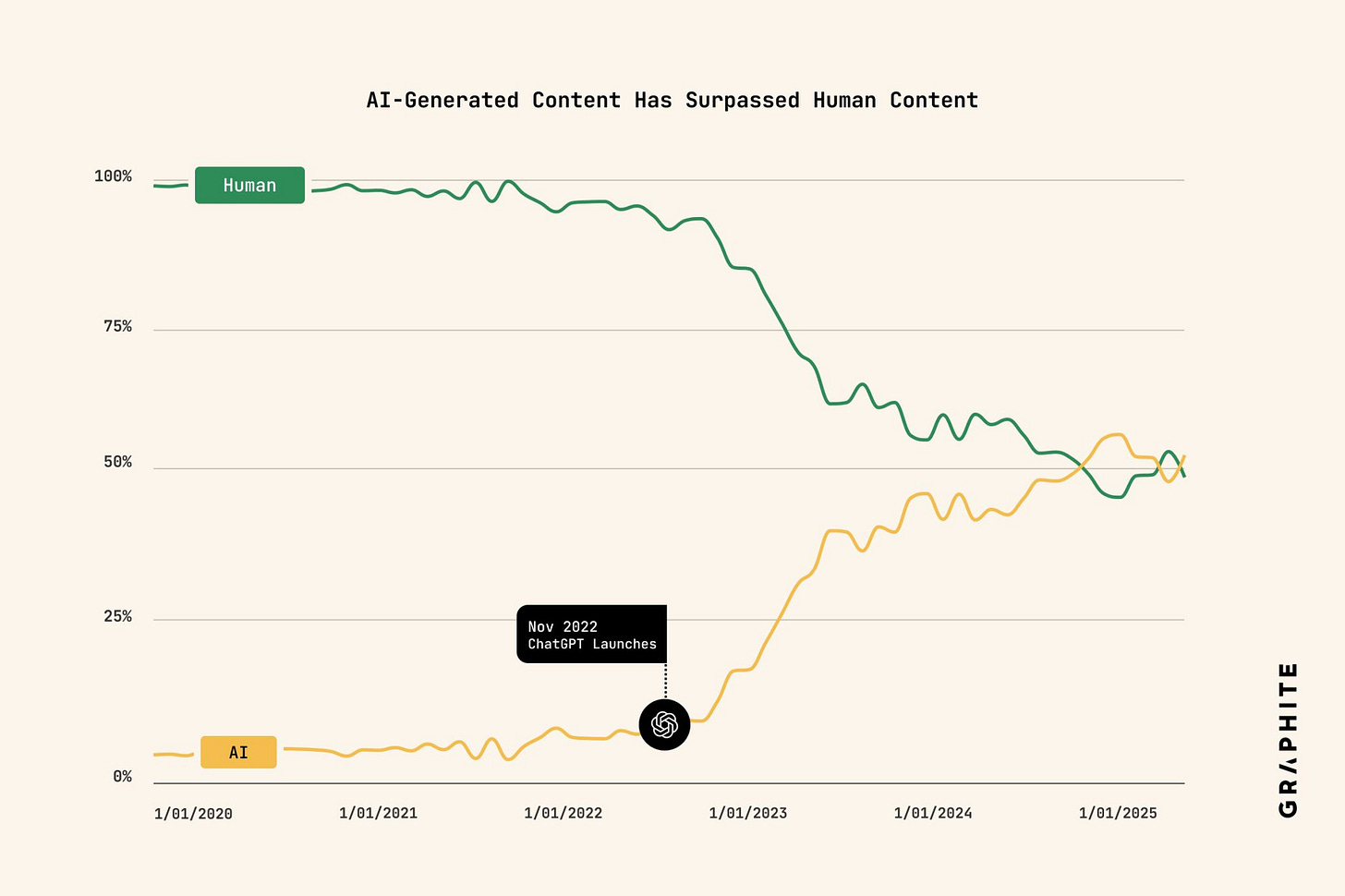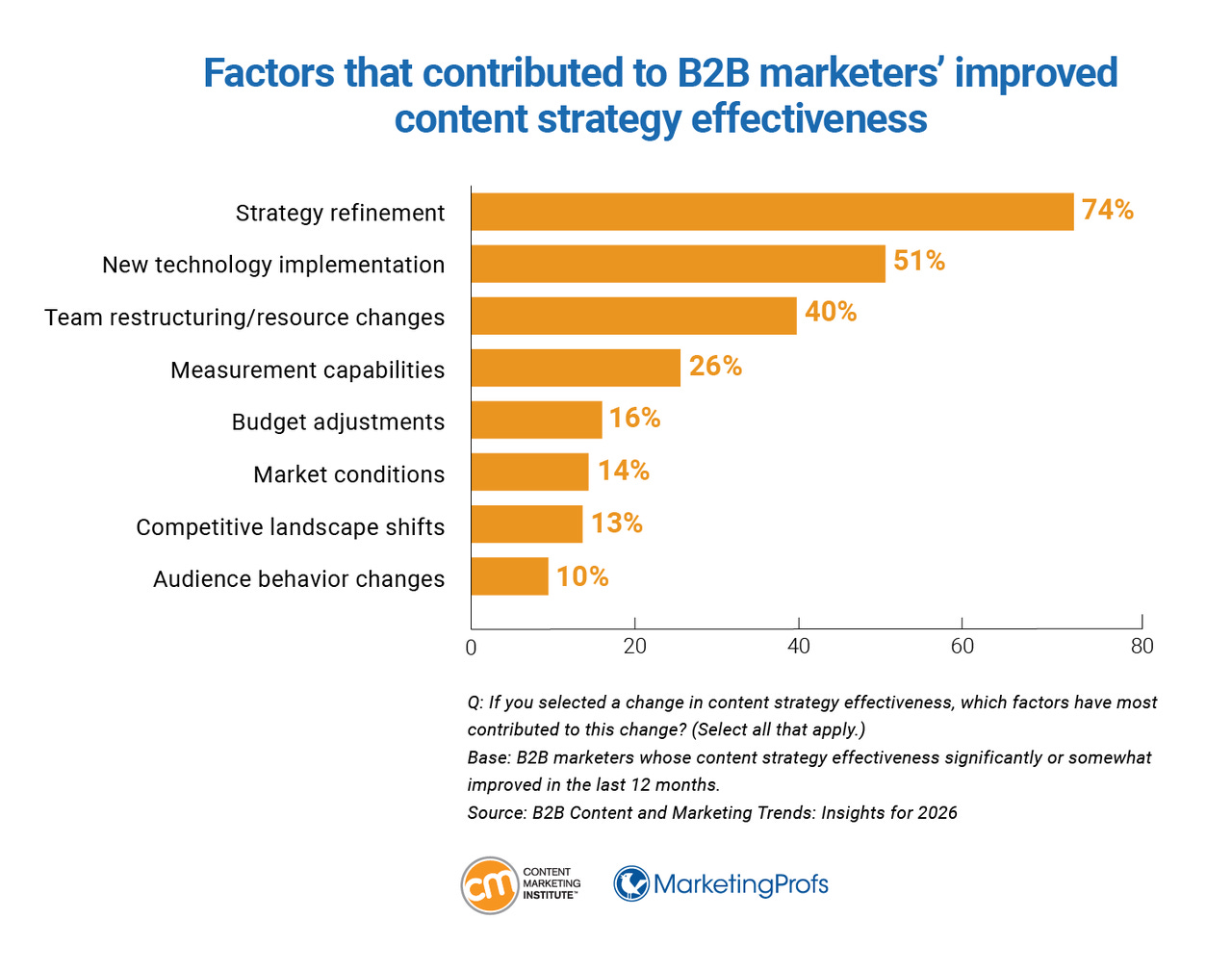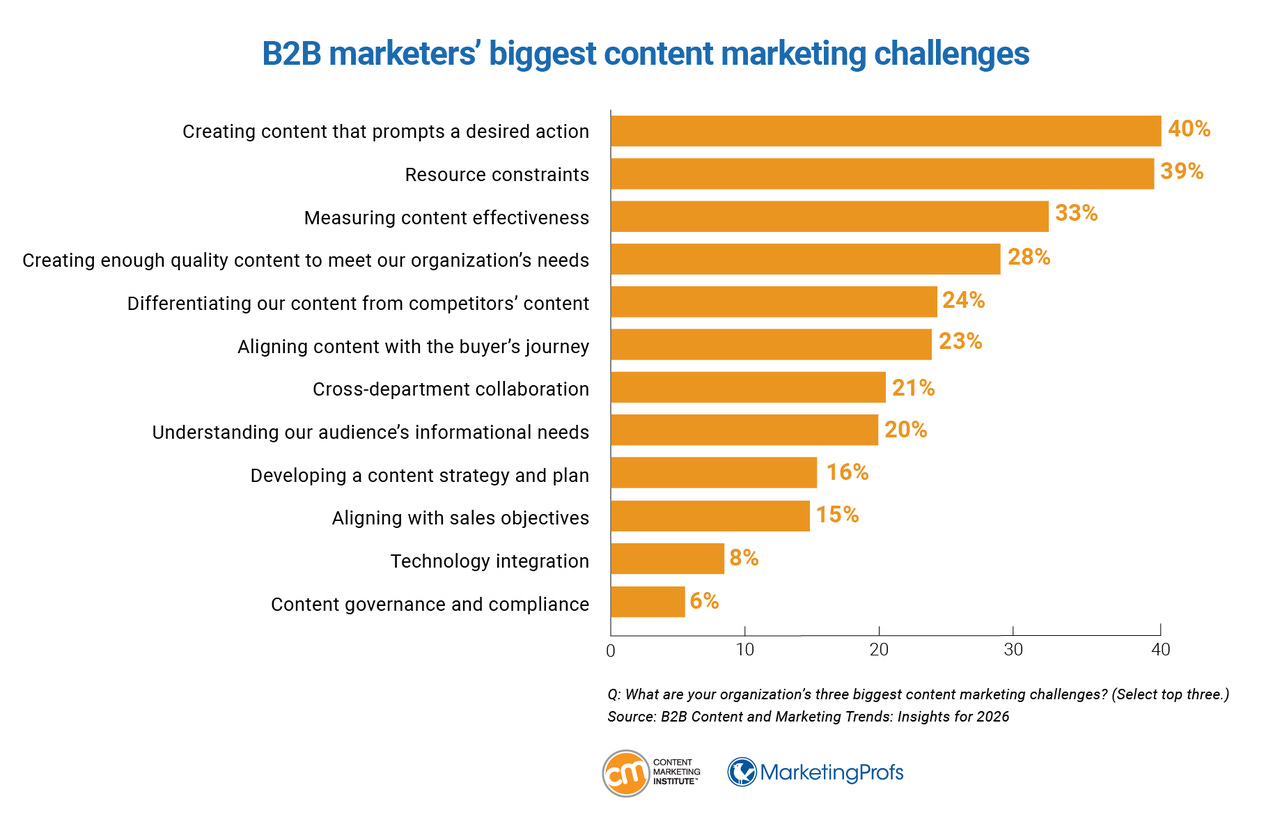A Better Way Forward for B2B Content Marketing in the AI Age
As AI floods the web with content, top B2B teams are shifting focus from volume to value - building on real insight and using AI to amplify, not replace, strategy.
AI now writes half the content on the Internet. That crossover happened in just 18 months after ChatGPT’s launch.
But here’s what should worry you: according to Graphite along with AIOS only 14% of AI content appears in Google Search results. Thousands of marketers are flooding the internet with content that search engines actively deprioritize.
And yet, the tools keep churning.
The Gap Nobody’s Talking About
According to a recent Content Marketing Institute survey of 1,000+ B2B marketers:
Only 1 in 5 rate their content marketing as truly successful
AI adoption jumped from 72% to 81% in a single year
Half of teams report more efficient workflows
So why isn’t performance improving?
We’ve optimized for output, not outcomes. We’re cranking out more content while competing in an exponentially noisier environment. More volume, same problems, worse results.
What the Winners Do Differently
The minority of B2B marketers rating themselves as highly successful credit two things:
Content relevance and quality (not quantity)
Team skills and capabilities (not tools)
The biggest driver of improvement? Refinement of strategy. They went back to basics: understanding audiences deeply, producing fewer high-quality assets, setting clear goals, and building systems to learn from results.
New tools helped - but only after the strategic foundation was solid.
The Real Problems (And How to Solve Them)
The top three challenges haven’t changed, but AI made them worse:
40% struggle with content that converts
39% face resource constraints
33% can’t measure effectiveness
These aren’t tool problems. They’re strategy problems. Here’s the hard work most teams are avoiding:
1. Build Content on Proprietary Insight
The trap: When everyone can generate “Top 10 Benefits of Cloud Security” or “5 Reasons to Build Data Literacy,” none of those posts matter.
The solution:
Get specific about objectives. Not “increase brand awareness.”
Then build content from proprietary research:
Conduct 20 customer interviews
Mine your sales calls for patterns
Document the exact phrases buyers use to describe their problems
Identify where deals stall and why
Capture what your best customers wish they knew before buying
This insight is what AI can’t generate - and what your competitors won’t have.
2. Stop Doing What Doesn’t Work
The trap: AI was supposed to free up resources. Instead, it created new work - managing tools, training teams, editing output, handling increased content requests.
The solution:
Audit ruthlessly:
What content actually drove pipeline or revenue?
Which channels delivered business outcomes?
What got engagement but no results? Kill it.
What’s created out of habit or politics? Stop it.
One company in the research created 250 thought leadership PDFs. Only 63 earned more than 20 downloads. That’s a decision-making problem, not a resource problem.
Then focus strategically:
Pick 1-2 channels where your buyers actually pay attention:
Your blog (for SEO and depth)
LinkedIn (for B2B reach)
One other channel based on your audience
Master those before spreading thin.
3. Track What Actually Matters
The trap: More content creates more confusion. You’re drowning in metrics across channels, formats, and campaigns.
The solution:
Stop tracking:
Vanity metrics (page views, likes)
Activity metrics (posts published, emails sent)
Start tracking:
Content that directly influenced pipeline
Time spent on the content
Specific objections your content resolved
Which content sales actually uses and shares
The teams measuring effectively aren’t tracking everything. They made hard choices about what matters to their business.
4. Use AI as an Amplifier, Not a Replacement
Don’t use AI for:
Building 6-month content plans from generic inputs
Writing full pieces start to finish
Creating “10 quick posts about [generic topic]”
Replacing strategic decisions
Do use AI for:
Analyzing patterns across customer interviews
Brainstorming unconventional angles
Editing and tightening drafts
Repurposing strong content into multiple formats
Research synthesis and competitive analysis
The Hard Truth About Volume
In a world where AI generates half the internet’s content, volume is the worst possible strategy. You can’t out-produce the machine.
The only sustainable path forward: Ask yourself, “Why would my target customer click this, consume it, and take action?”
If you can’t answer specifically, don’t create it.
Your 2026 Goal
In a world where half the internet is AI-generated, the question isn’t whether you’re using AI.
Pause your production engine. Fix your strategy engine.
That might mean:
Conducting customer interviews next month instead of publishing blog posts
Auditing your last 50 pieces to see what drove business outcomes
Killing your three lowest-performing initiatives
Getting honest about whether you have a strategy or just a content calendar
The question is: Do you know what problems you’re solving - and is more content actually the answer?
Teams winning in 2026 aren’t playing with prompts or churning out volume. They’re building stronger fundamentals, then letting AI amplify those efforts.
Your customer doesn’t care about your tools. They only care if your content solves their problem.
Make that your 2026 goal.




